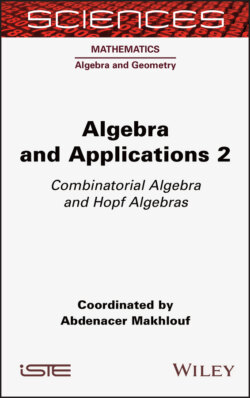Читать книгу Algebra and Applications 2 - Группа авторов - Страница 13
1.2.4. Bialgebras and Hopf algebras
ОглавлениеA (unital and counital) bialgebra is a vector space ℋ endowed with a structure of unital algebra (m, ε) and a structure of counital coalgebra (Δ, ε), which are compatible. The compatibility requirement is that Δ is an algebra morphism (or equivalently that m is a coalgebra morphism), ε is an algebra morphism and u is a coalgebra morphism. It is expressed by the commutativity of the three following diagrams:
A Hopf algebra is a bialgebra ℋ together with a linear map S : ℋ → ℋ, called the antipode, such that the following diagram commutes:
In Sweedler’s notation, it reads:
In other words, the antipode is an inverse of the identity I for the convolution product on . The unit for the convolution is the map u ∘ ε.
A primitive element in a bialgebra ℋ is an element x, such that Δx = x⊗1 + 1⊗x. A grouplike element is a nonzero element x, such that Δx = x⊗x. Note that grouplike elements make sense in any coalgebra.
A bi-ideal in a bialgebra ℋ is a two-sided ideal, which is also a two-sided coideal. A Hopf ideal in a Hopf algebra ℋ is a bi-ideal J, such that S(J) ⊂ J.
